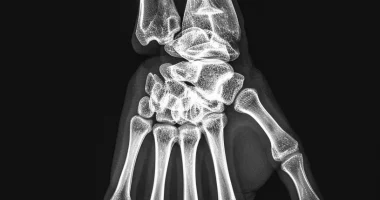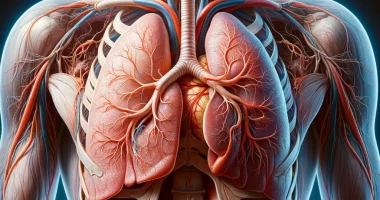Overactive bladder (OAB)
What’s that?
Overactive bladder (OAB) is a condition characterized by frequent urges to urinate and, often, urinary incontinence. The pathology is based on innervation disorders and/or muscular dysfunction, resulting in the organ reacting to even a small accumulation of fluid inside it.
About the disease
Overactive bladder is a widespread syndrome. According to the International Urinary Retention Society, 17% of European adults have symptoms. It should be noted that OAB without urinary incontinence (“dry OAB”) occurs in 7.6% of women, and OAB combined with urge urinary incontinence – in 9.3%. Currently, there is an increasing trend in the incidence of urinary incontinence in women, from 12% under the age of 60 to 20% at the age of 65 and older. It is
| Degreeofillness | Number of urinations per day | Number of urges per day | Number of incontinence episodes per week | Volume of urine at a time | Bladdervolume |
| Light | Less than 10 | Not more than 1 | No more than one time | 80-100 ml. | 250-300 ml |
| Medium | 10-14 | 2-4 | More than once a week | 60-75 ml. | 200-220 ml. |
generally more pronounced in women after age 44 and in men after age 64.
Although OAB is more commonly diagnosed in the elderly, its symptoms are also found in other age groups. The highest number of patients is found in those over 40. In men over 60, there is a clear tendency for the incidence to increase and, in women, decrease. Thus, OAB is a relatively common clinical syndrome occurring in various age groups and leading to physical and social maladaptation.
| Heavy | 15 or more | Five or more | Several times a day | 50-60 ml. | 200 ml or less |
Classification of OAB
Depending on the frequency of urination, imperative urges, and episodes of urinary incontinence, doctors distinguish three degrees of overactive bladder:
The dry and wet forms of OAB are also distinguished. In the first case, the patient has no urinary incontinence episodes; in the second case, there are urinary incontinence episodes.
Symptoms of overactive bladder
The main signs of an overactive bladder are:
- frequent urges to urinate;
- intermittent urges to empty the bladder;
- small amounts of urine;
- decreased bladder volume.
Most patients also develop urinary incontinence. Urge to urinate, and attacks of incontinence can occur both by themselves and against the background of external stimuli. The triggering factor is often a sound or a
sight of water pouring out. Some patients have a feeling of discomfort in the urethra after urination.
Causes of OAB
The leading cause of urgency and increased frequency of urination is a specific change in the detrusor (the muscular lining of the bladder), resulting in involuntary contractions. In patients with OAB, the nerve endings in the bladder are in a state of chronic irritation, chaotically transmitting signals to the brain. It prevents the bladder from adequately storing urine and leads to involuntary contractions during filling, which is manifested by urgency incontinence.
It can occur against the background of neurological diseases (multiple sclerosis, diabetic or alcoholic neuropathy), spinal cord injuries, taking certain medications, as well as pathologies that are accompanied by edema (chronic heart failure, etc.). Risk factors are also:
- severe labor accompanied by tissue tearing;
- urinary and/or genital surgeries;
- depression;
- age over 75 years old;
- overweight;
- alcohol or caffeine abuse
Diagnosis of an overactive bladder
Patients require a baseline examination to rule out urologic and other conditions that may cause urgency and urinary frequency. Diagnosis of OAB can be successfully performed on an outpatient basis and, in most cases, does not require special examination methods.
As a rule, patients with frequent and urgent urination, to exclude other diseases, are assessed for frequency of urination, urine tests, and ultrasound of the kidneys, bladder, and prostate to determine the volume of residual urine.
Urinary diary data is also essential and allows overactive bladder to be recognized.
Treatment of OAB
The choice of treatment method for overactive bladder in men and women depends on its cause, severity of symptoms, and individual characteristics of the patient’s body. In mild forms, non-medication methods come to the forefront.
Behavioral therapy in treating OAB aims to establish a new urination pattern or restore the previous one, in which this process becomes controllable for the patient again.
Analyzing the data of the diary of urination together, the doctor should pay attention to episodes with the most prolonged time interval between the patient will be able to determine the minimum time interval to be observed between urination, for example, every 2 hours, not earlier.
Correction of the drinking regimen. Patients with urinary incontinence and/or urinary frequency often limit their fluid intake in an attempt to reduce involuntary urine loss. To reduce the frequency of nighttime urination, fluid intake should be restricted at least 4 hours before bedtime.
Therapeutic exercises are also essential. These are, first of all, exercises aimed at strengthening the pelvic floor muscles. They are especially relevant for women. With the regular performance of the complex, 2/3 of patients note an improvement within 4-6 weeks. In case of insufficient effectiveness of conventional gymnastics, electrostimulation of the pelvic floor muscles is prescribed.
If the effectiveness of non-drug therapy is insufficient, medications that relax the bladder muscles are used. If necessary, antidepressants are prescribed.
Surgical treatment is prescribed when conservative therapy is ineffective. Nowadays, minimally invasive techniques are coming to the forefront, which involve the introduction of botulinum toxin-based drugs into the sphincter or detrusor of the bladder.
In addition, doctors can dissect the nerves that provoke excessive bladder activity or, on the contrary, stimulate the nerve trunks with electrical impulses. If the bladder volume is significantly reduced, the bladder is repaired, or a temporary alternative urinary outflow route is created (epicystostomy, pyelostomy).
All these treatment options are available in more than 90 hospitals worldwide (https://doctor.global/results/diseases/overactive-bladder-oab). For example, sacral nerve stimulation can be performed in 3 clinics across USA for an approximate price of $30.5 K (https://doctor.global/results/americas/united-states/all-cities/all-specializations/procedures/sacral-nerve-stimulation).
Prevention
Methods for preventing the development of overactive bladder include:
- proper nutrition;
- sufficient physical activity;
- reduction of body weight in case of excess weight;
- withdrawal from alcohol nicotine;
- timely detection and treatment of diseases that can lead to OAB;
- taking medications only as prescribed by your doctor.
In addition, it is essential to see a specialist for the first symptoms of an overactive bladder and take measures to eliminate the disorder.
Rehabilitation
The duration of the rehabilitation period after surgical OAB treatment depends on the intervention type. Until the tissues heal, the patient should limit physical activity and avoid hypothermia or overheating. Correction of nutrition, control of fluid intake, and compliance with all preventive measures are also crucial as they help to avoid recurrence.



